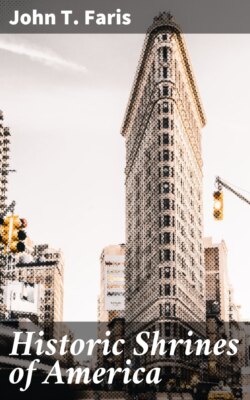Читать книгу Historic Shrines of America - John T. Faris - Страница 14
На сайте Литреса книга снята с продажи.
THE QUINCY MANSION, QUINCY, MASSACHUSETTS
ОглавлениеTable of Contents
THE HOME OF THREE DOROTHY QUINCYS
Among the settlers to whom Boston granted large allotments of outlying lands were William Coddington and Edmund Quincy. In 1635 they went, in company with their associate settlers, to "the mount," which became Braintree, now Quincy.
By the side of a pleasant brook, under the shade of spreading trees, Coddington built in 1636 his house of four rooms. Downstairs was the kitchen and the living room, while upstairs were two bedrooms. The upper story overhung the lower in the old manner, and a generous chimney, which afforded room for a large open fireplace, dominated the whole.
This house became the meeting place for a group of seekers after religious liberty who were looked upon with suspicion in Boston—Rev. John Wheelwright, Sir Harry Vane, Atherton Hough, Ann Hutchinson, and others. In consequence of their views the company was soon broken up. Ann Hutchinson and Wheelwright were banished, while Coddington would have been banished if he had not gone hastily to Rhode Island.
Edmund Quincy, who succeeded to Coddington's house, probably would have been banished if he had not died before the decree could be pronounced. For a season his widow, Judith, lived in the house, which, from that time, became known as the Quincy Mansion. With her were the children, Edmund and Judith. Judith, who married at twenty, and became the mother of Hannah (Betsy) Hull, whose dowry, when she became the bride of Judge Samuel Sewell, was her weight in pine-tree shillings, the gift of her father, the master of the colony's mint. Florence Royce Davis has written of the wedding:
